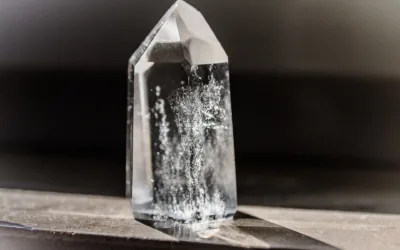June’s Birthstones: Pearl, Alexandrite, Moonstone
True, natural pearls are formed by animals and must be found, but the gemstone can also be farmed or replicated in imitation form.
Alexandrite is fascinating, rare, and can be very expensive, while moonstone is often accessible in comparison but no less impressive.
Let’s take a closer look at each of June’s three birthstones.
JUMP TO: Pearl | Alexandrite | Moonstone
Pearl: June’s Organic Birthstone
Natural pearls are an organic gemstone that is created in the wild, with no human intervention.
They are referred to as “organic” because they are produced by an animal. Organic gemstones can also be plant products, such as amber.
Not surprisingly, natural pearls are the most rare and, therefore, the most valuable.

Pearl Color
Pearls come in a wide range of colors, including the iconic, shimmering white.
They can also be found in black, and pink.
Pearl Significance
Pearls are considered to be a symbol of beauty and purity.
In some cultures, pearls are believed to possess magical powers, and they have been used as talismans to ward off evil spirits.
In China, pearls are associated with wisdom and are often given to new graduates as a symbol of good luck.
Pearl History
Pearls have been treasured by humans for centuries, and they have been used as currency, jewelry, and even medicine.
Pearl Facts
The majority of the pearls we see for sale are cultured or farmed pearls. These are generally formed by pearl oysters or freshwater mussels and require human intervention.
Imitation pearls are a type of human-made bead created to resemble a pearl. These are often made of glass, shell or plastic.
Natural pearls are rare and difficult to find, and therefore can be quite expensive.
Pearl farming is a delicate process, and it takes many years to produce a pearl.
The most common type of pearl is the Akoya pearl
How Are Pearls Formed?
Natural pearls are formed by a fascinating process.
- The best-known account of how pearls originate includes a grain of sand working its way inside a mollusk shell.
- In reality, it’s not typically sand but most often a parasite that works its way into the shell of an oyster or mussel.
- The animal then goes into protective mode, secreting a substance called “nacre” to encapsulate the alien threat.
- Nacre is a hard substance, and the mollusk continues secreting it in layers, coating the irritant.
- Over time, more and more layers of nacre will build up and form a pearl.

Alexandrite Color
Alexandrite is often referred to as an emerald by day, ruby by night, because in daylight it appears bluish-green, and in incandescent light it looks purplish-red. Hold it outside in the sun or inside under a lamp and you’ll witness a fascinating change.
The finest alexandrite has a green to bluish-green color, but it can also be yellow, brown, or even colorless.
Alexandrite Significance
Alexandrite has been associated with luck, prosperity, creativity, imagination, intuition and intellect.
In some cultures, Alexandrite was believed to have magical properties, and was used in talismans and amulets.
Alexandrite History
Alexandrite has a long and varied history, and has been used as a gemstone for centuries.
It was first discovered in Russia in 1830, and was named “alexandrite” because it was found on the birthday of Tsar (emperor) Alexander II.
Alexandrite Facts
Alexandrite is a variety of chrysoberyl, a mineral that is rare in nature.
Alexandrite was originally discovered in Russia's Ural Mountains in 1830.
Alexandrite is a relatively soft stone, so it needs to be treated with care.
The gemstone's ability to change color is due to trace amounts of chromium in the stone.
More About Alexandrite
Moonstone: June’s Lunar Birthstone
Both ancient Romans and Greeks made lunar associations with moonstones, thus giving this feldspar variety a name that endures, even though we now know the gemstone is not created by moon rays or deities.
Still, there’s no denying moonstones’ out-of-this-world appearance, which can be brilliant when light works its way through the gem’s layers.

Moonstone Color
Moonstones have translucent layers with the appearance of light trapped inside, often with bluish hues or a colorless, milky sheen.
The most common colors of moonstone are white, gray, peach, yellow, green, blue, and pink.
The most prized moonstones are those with a blue sheen.
Moonstone Significance
Moonstones are often believed to have a variety of mystical properties, including the ability to promote good luck, love, and fertility.
In Hindu mythology, moonstone is considered to be a sacred stone that was created from drops of the goddess Lakshmi’s milk.
Moonstone History
Ancient Romans and Greeks tied moonstone to lunar deities. In Rome, moonstone was associated with the moon goddess Diana, and in Greece, the stone was associated with goddess of love Aphrodite and moon goddess Selene.
In 1970, Florida declared moonstones its official state gemstone.
Moonstone Facts
The finest Moonstones are predominantly found in Sri Lanka and India.
Moonstones can also be found in the United States, Mexico, Brazil, Australia, Madagascar and Armenia.
Moonstone is a type of feldspar mineral.
Moonstone is named for its moon-like sheen.
More About Moonstones
You Might Also Like
Alternate April Birthstones
Looking for an alternate April birthstone? Understandable. Diamonds can be challenging for multiple reasons. Perhaps you are trying to find a gift but don't want to splurge on April's traditional birthstone. Or perhaps you have issues with the diamond industry itself...
Pearl Farming: A Complete Guide
Finding naturally occurring pearls can be difficult and dangerous, so pearl farming has become the predominant method of producing pearls for jewelry and other applications.
5 Facts About Sapphires
August’s birthstone, sapphire, is among the most popular gemstones in the world, and for good reason! Let’s take a look at some interesting facts about sapphires.



